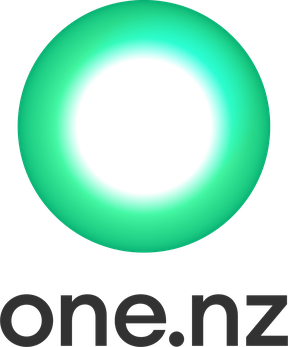The Mobile phone industry in Ukraine started in 1993 in analog, and its digital industry showed rapid growth, although there have been ups and downs.
Ukraine's first mobile phone service began with analog NMT in 1993, and digital GSM, using 900 MHz and 1800 MHz, since 1997 and 2000, respectively. The mobile phone market since developed rapidly, although there were ups and downs, till it reached 54,800,000 users by the end of 2021. [1]
There are now three large mobile phone carriers that serve throughout Ukraine: Kyivstar, Vodafone and lifecell. All these three use GSM, but there are CDMA carriers such as Intertelecom and PEOPLEnet. [2]
Kyivstar is Ukraine's largest mobile operator, claiming 48 percent of the market. The company is under VEON, a Netherlands company, whose major shareholder is VimpelCom of Russia.
Vodafone Ukraine is the second largest carrier with a 35 percent market share. The company was originally founded by Russia's Mobile Telesystems using Vodafone technology, but was sold to Bakcell [3] under Azerbaijan's Neqsol Shareholding Company.
lifecell with a 17 percent market share is under the Turkish mobile company, Turkcell.
Various devices imported or manufactured in Ukraine have been used. [4]
The 2014 Annexation of Crimea by Russia and the 2022 Russian invasion of Ukraine have done limited damage on Ukraine's mobile phone infrastructure. [5] Where damaged, the mobile network is in some cases supported by SpaceX's Starlink satellites. [6] [7]

Advanced Mobile Phone System (AMPS) was an analog mobile phone system standard originally developed by Bell Labs and later modified in a cooperative effort between Bell Labs and Motorola. It was officially introduced in the Americas on October 13, 1983, and was deployed in many other countries too, including Israel in 1986, Australia in 1987, Singapore in 1988, and Pakistan in 1990. It was the primary analog mobile phone system in North America through the 1980s and into the 2000s. As of February 18, 2008, carriers in the United States were no longer required to support AMPS and companies such as AT&T and Verizon Communications have discontinued this service permanently. AMPS was discontinued in Australia in September 2000, in Pakistan by October 2004, in Israel by January 2010, and Brazil by 2010.
A personal communications service (PCS) is set of communications capabilities that provide a combination of terminal mobility, personal mobility, and service profile management. This class of services comprises several types of wireless voice or wireless dcommunications systems, typically incorporating digital technology, providing services similar to advanced cellular mobile or paging services. In addition, PCS can also be used to provide other wireless communications services, including services that allow people to place and receive communications while away from their home or office, as well as wireless communications to homes, office buildings and other fixed locations. Described in more commercial terms, PCS is a generation of wireless cellular-phone technology, that combines a range of features and services surpassing those available in analogue- and first-generation (2G) digital-cellular phone systems, providing a user with an all-in-one wireless phone, paging, messaging, and data service.
Telecommunications is one of the most modern, diverse and fast-growing sectors in the economy of Ukraine. Unlike country's dominating export industries, the telecommunications, as well as the related Internet sector, remain largely unaffected by the global economic crisis, ranking high in European and global rankings.
The Universal Mobile Telecommunications System (UMTS) is a third generation mobile cellular system for networks based on the GSM standard. Developed and maintained by the 3GPP, UMTS is a component of the International Telecommunication Union IMT-2000 standard set and compares with the CDMA2000 standard set for networks based on the competing cdmaOne technology. UMTS uses wideband code-division multiple access (W-CDMA) radio access technology to offer greater spectral efficiency and bandwidth to mobile network operators.

T-Mobile is the brand name used by some of the mobile communications subsidiaries of the German telecommunications company Deutsche Telekom AG in the Czech Republic, Poland and the United States.

Vodafone Group plc is a British multinational telecommunications company. Its registered office and global headquarters are in Newbury, Berkshire, England. It predominantly operates services in Asia, Africa, Europe, and Oceania.

MTS, headquartered in Moscow, is the largest mobile network operator in Russia, operating on GSM, UMTS and LTE standards. Apart from cellular network, the company also offers local telephone service, broadband, mobile television, cable television, satellite television and digital television.

Beeline, formerly Bee Line GSM is a telecommunications brand by company PJSC VimpelCom, founded in Russia.
GSM frequency bands or frequency ranges are the cellular frequencies designated by the ITU for the operation of GSM mobile phones and other mobile devices.

One New Zealand Group Limited, stylised as One NZ, is a New Zealand telecommunications company. One NZ is the largest wireless carrier in New Zealand, accounting for 38% of the country's mobile share market in 2021.

Kyivstar is a Ukrainian telecommunications company, providing communication services and data transmission based on a broad range of fixed and mobile technologies, including 4G (LTE) services, in Ukraine.
Vodafone Ukraine is the second-largest mobile operator in Ukraine with 23.1 million users and thus a 38 percent market share. In November 2009 it had 17.74 million GSM subscribers. The company is fully owned by NEQSOL Holding. In October 2015 Mobile TeleSystems and Vodafone expanded their 2008 strategic partnership; this resulted in the rebranding of MTS Ukraine to Vodafone Ukraine.

lifecell ) is the third largest Ukrainian mobile telephone network operator, covering 98.82% of Ukrainian inhabited territory. The company is wholly owned by Turkcell. Lifecell's dialing prefixes are +38063, +38093 and +38073.
Mobile identity is a development of online authentication and digital signatures, where the SIM card of one's mobile phone works as an identity tool. Mobile identity enables legally binding authentication and transaction signing for online banking, payment confirmation, corporate services, and consuming online content. The user's certificates are maintained on the telecom operator's SIM card and in order to use them, the user has to enter a personal, secret PIN code. When using mobile identity, no separate card reader is needed, as the phone itself already performs both functions.
Vodafone Hungary is the third largest mobile operator in Hungary. It started operations in 1999 after securing the third GSM 900/1800 MHz licence of the country and it was the first provider operating in the DCS-1800 band in Hungary. Vodafone is the third largest mobile network operator of the country again. The operator had a share of ~27% of the market in Q2 2020. They controlled approx. 27% of the market in December 2019. Market share The full report about the number of subscribers is available on the company website.

The Internet in Ukraine is well developed and steadily growing, mostly uninfluenced by the global financial crisis; in April 2012 rapid growth was forecast for at least two more years. As of 2011, Ukraine was ranked 9th in the "Top 10 Internet countries in Europe", with then 33.9% Internet penetration and 15.3 million users; growing to 36.8% in 2012. However, as of January 2021 about 30 million Ukrainians were Internet users.

Mobile phone industry in Russia is an trade industry of cell phone devices and mobile network services in Russia. Since the collapse of the Soviet Union in the 1991 it had seen a great expansion over the last decades becoming one of the largest in the world. In terms of number of smartphone users, Russia is the 4th biggest smartphone market in the world sitting behind only China, India, and USA.
Cellular frequencies are the sets of frequency ranges within the ultra high frequency band that have been assigned for cellular-compatible mobile devices, such as mobile phones, to connect to cellular networks. Most mobile networks worldwide use portions of the radio frequency spectrum, allocated to the mobile service, for the transmission and reception of their signals. The particular bands may also be shared with other radiocommunication services, e.g. broadcasting service, and fixed service operation.
NEQSOL Holding is an international group of companies. Most companies of the group are active in the fields of energy, telecommunications, construction and high-tech.